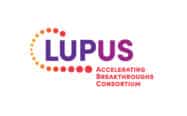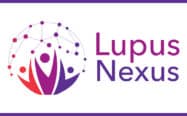November 23, 2020
Up to 95% of lupus patients report pain and fatigue caused by the disease. To explore ways to fix this, a research team led by Dr. Cynthia Aranow at The Feinstein Institutes for Medical Research studied whether lessening inflammation in patients with lupus would also lessen pain and fatigue. In this study, she and her colleagues found that increasing the activity of the vagus nerve – a fiber running from the brain to the gut, heart and lungs – can decrease inflammation, lessening pain and fatigue symptoms in lupus patients. Dr. Aranow is one of the hundreds of top researchers participating in the Lupus Clinical Investigators Network (LuCIN), managed by LRA’s affiliate Lupus Therapeutics,
According to Dr. Aranow, “This study is a promising start for vagus nerve therapy as a treatment for the pain and fatigue that lupus so often brings. Controlling these symptoms by reducing inflammation represents an important step forward for improving the quality of life of lupus patients.”
When you have a cut, the injured area swells, becomes warm to the touch, and is sensitive, known as inflammation. Inflammation is the body’s first defense against invaders like bacteria; the heat, sensitivity, and growth are meant to quickly destroy invaders while separating injured from healthy tissue. After the injury is controlled, the body has natural mechanisms to turn off this inflammatory response. In diseases such as systemic lupus, the tissue inflammation is out of control, causing pain and fatigue.
One way to lessen inflammation is through stimulating the vagus nerve. Higher activity of the vagus nerve has been shown to lower inflammation. Researchers tested if activating the vagus nerve could decrease pain and fatigue symptoms in a study of 18 lupus patients. They compared 12 patients who received the nerve stimulation to 6 patients who received a “dummy” stimulation. The study used many tests to see if pain symptoms had lessened; most of these tests also measured the levels of specific proteins that can trigger inflammation.
Nerve stimulation is painless. After four 5 minute sessions, 10 of the 12 lupus patients receiving stimulation had decreased pain compared to the lupus patients who did not receive nerve stimulation. Treated lupus patients not only reported feeling less pain, but also had less tender and swollen joints. Additionally, their blood had lower levels of one of the proteins that can lead to inflammation, called Substance P. Researchers also looked at whether activating the nerve could lessen fatigue symptoms in lupus patients. Like the pain results, lupus patients had significantly less fatigue after four stimulation sessions; fatigue was measured using a widely used scale called FACIT-F that asks 13 questions about one’s fatigue over the past seven days. The lupus patients in this study did not show any negative side effects from stimulation of the nerve.
Although scientists looked at the levels of many other proteins linked to inflammation, only Substance P decreased. Taken together, researchers believe that lowering Substance P may be one of the ways that the vagus nerve reduces pain, fatigue and inflammation.
The authors of the study mention that four daily sessions of nerve stimulation may not be enough to detect changes in levels of proteins other than Substance P that trigger inflammation, and that more treatment sessions could show different results. Overall, the scientists believe this study demonstrated that activating the vagus nerve is a promising and safe approach to treat pain and fatigue in lupus patients. They hope to conduct a larger and longer clinical trial to evaluate the potential benefit of this treatment for SLE patients.






